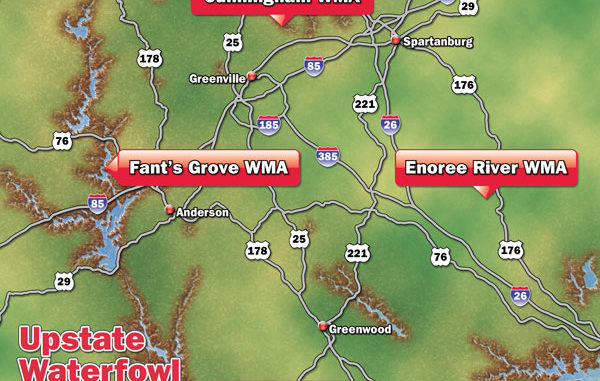
Upstate and Piedmont waterfowl hunters have a treasure trove of good areas to find the ‘Carolina duck.’
It’s hard to imagine how sitting in a deer stand during the rut could infuse a die-hard South Carolina hunter with the urge to duck hunt, but it happens.
Tommy Price, an Anderson native, says the urge comes over him every year.
“I belong to a deer club in Abbeville County that has two or three big creeks on it, and one of my most productive deer stands sits right on the side of one of those creeks,” said Price, who is the public address announcer at Westside High School football games. “Every year, starting around the end of October, woodies come flooding into that creek to eat water oak acorns.
“Two or three years ago, I couldn’t stand it. I slipped down into that creekbottom just before daylight on the opening day of the early duck season with my shotgun and killed my limit of wood ducks as soon as they flew in. Then, I picked up my rifle and crawled back up into my deer stand still wearing my waders. ‘Whew, that’s better,’ I said to myself, and would you believe it, about an hour-and-a-half later, a nice 8-point tried to cross that creek, and I shot him, too.”
Wood ducks are a major player in the overall bag of duck hunters across South Carolina. Their range stretches from Oconee County to Horry County and all points between. However, many hunters swear that hunting the multi-colored waterfowl takes on an entirely different light when specifically targeting them on their own turf as opposed to including them in a mixed bag when hunting for other waterfowl species.
Shane Candler of Williamston has been duck hunting in the Upstate since the tender age of 5, long before he was allowed to carry a weapon of his own. These days, he’s an award-winning taxidermist and deer processor who slips away every chance he gets to duck hunt in his backyard.
“I love to hunt wood ducks around this area,” he said. “We may not have a lot of (the) shallow-water impoundments that you’ll find elsewhere, but what we do have is plenty of small creeks and swamps, and those are perfect places to find woodies.”
Before he heads out, Candler makes it a point to visit his hunting area the night before to watch the birds fly in to roost so he’ll know where and how to set up the next morning. He is not a fan of hunting ducks in the evening and said he has rarely seen wood ducks come into a roost during legal shooting light.
“For me, there’s not enough time to hunt a roost and still be legal,” he said. “Plus, if you shoot roosting birds, it won’t take long before you’ll ruin that hole. I’d much prefer to get in there and scout them and watch which way they fly in. Most of the time, that are going to go back to where they came from the evening before. They love tight spots with a lot of tree cover, so most likely they be roosting somewhere around a beaver swamp.”
Unlike conventional puddlers or diving ducks, woodies are perching ducks, tree dwellers with short claws on the end of their webbed feet that allow them to roost in trees. The wood duck’s diet also consists mainly of acorns, nuts, and berries, which provides some additional explanation for their fondness of forested areas. Like most ducks, woodies are social creatures, but according to Candler, the comparison to puddlers and divers ends there.
“I do not use decoys when I’m hunting wood ducks,” he said. “You’re at the mercy of the wood duck when you’re hunting them. Even with proper scouting, 90 pecent of wood-duck hunting is pass shooting. I have seen them decoy into a mallard spread, but they would just as soon land in an opening 100 yards away from a decoy spread. That’s why I target loafing areas, a big puddle in the middle of a creek or swamp, and let them come to me.”
Like Candler, Tommy Price believes a wood duck has already made up its mind where it’s going to land when it wakes up in the morning. Despite this predestination, Price believes a couple of wood duck blocks and a soft call can be a benefit.
“I’ve never done much good trying to hail call to woodies,” he said. “The hen does most of the directing when they’re in the air, but I can tell you from the amount of time that I’ve spent watching them swimming in the creek under my deer stands that they do a lot of communicating on the water. That’s where a soft call can help. I’ve had woodies fly over and just look at where I was set up and land somewhere else, then a few minutes later, they were swimming into my decoys.”
One of your best hunting companions when it comes to wood ducks may be the four-legged variety. Since wood ducks rarely present the standard “cupped and committed” shot, and hunting typically takes place in rough terrain, having a dog to retrieve downed birds is a big plus.
“I have a passion for dogs no matter what type of duck hunting I do,” Candler said, “but a retriever can make a huge difference when trying to recover birds that go down in moving water or in a swamp that may have holes over your head. A dog can navigate in a swamp a lot better than me. I also may mark a bird but not actually see it, so a dog’s nose may be the difference in bringing that bird in.”
Wood ducks are often referred to as “summer ducks” because of their year-round residency, and they’re even known in some areas as “Carolina ducks.” Whether wood ducks actually migrate during the winter is a matter for debate. The consensus is that they migrate regionally rather than from continent to continent.
“I’ve killed two banded wood ducks in my life, and I still can’t answer whether they migrate,” Price said. “The first one was a hen that was banded in Pelzer in April 1996 and killed in Abbeville in January 1999. The second was a drake that was banded in Jackson, Ohio, in July 1997 and killed in Abbeville in December 1999. Maybe only the males migrate.”

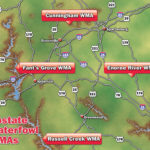
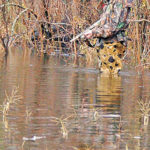
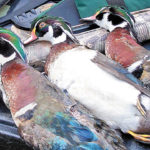
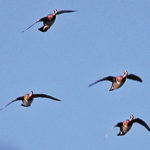
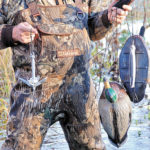
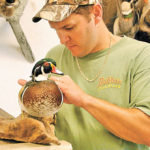



Be the first to comment